How to Help Your Pet Cough Something Up
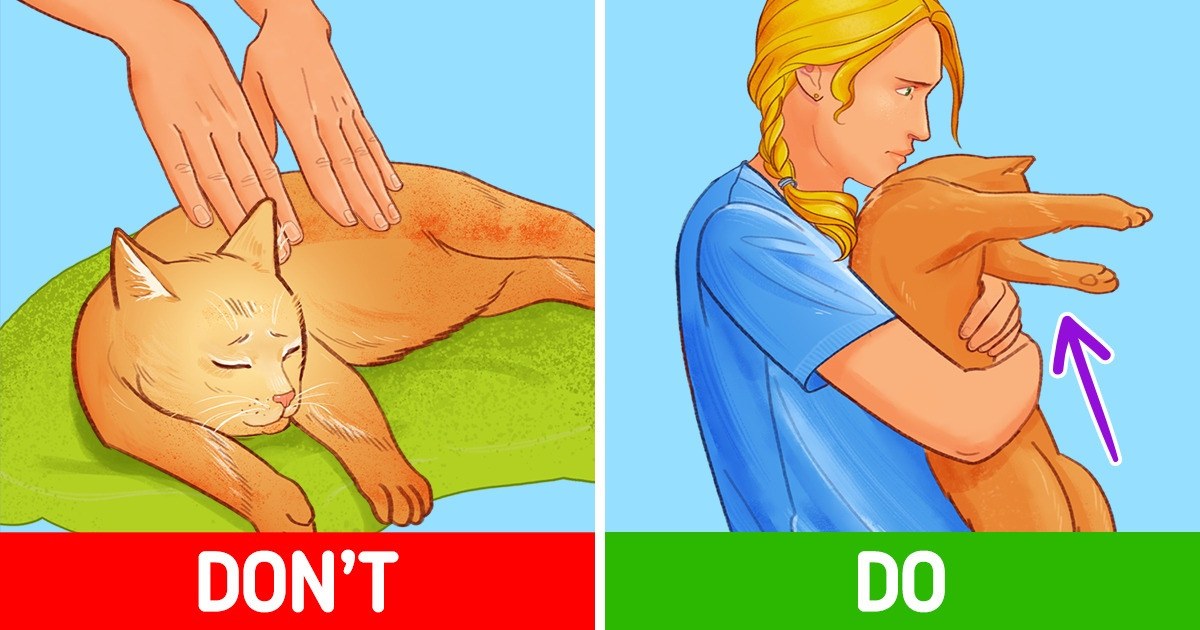
Even the healthiest cats can face breathing difficulties if a foreign object is lodged in their throats. There are many different approaches to helping them when they’re in the middle of choking on something. It’s important to know the symptoms in the first place and take action immediately.
5-Minute Crafts prepared this article to show you the essential tips for how to help and save our furry friends when they’re coughing something up.
❗ All the information provided in the article is intended for informational purposes only and doesn’t constitute medical advice. In such situations, contact the vet immediately.
The difference between coughing and choking
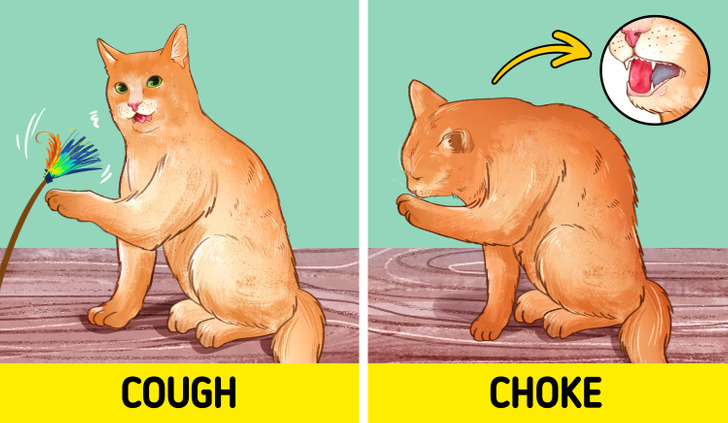
When some small foreign particles, such as irritants, dust, mucus, or microbes, enter a cat’s airway, it develops a protective reflex. This reflex is called a “cough.” It’s natural for cats to cough up hairballs, etc. If you hear wheezing or high-pitched sounds coming from your cat’s airway, it’s a sign that a small amount of air is getting through.
If something gets stuck in a cat’s mouth or throat and they can’t get enough air, it’s considered a “choke.” If it’s completely blocked, you’ll hear nothing. You can determine choking from some symptoms that your cat begins to display, such as distress, pawing at the mouth or face, often shaking the head, rubbing the face against the ground, salivating, blue or purple gums and tongue, etc.
When to get concerned, and what to do
Stay calm and determine if your kitty is choking or coughing. If you see the cat taking breaths, it’s not choking. However, if its airway is partially or entirely blocked, it can’t breathe, and you need to intervene quickly.
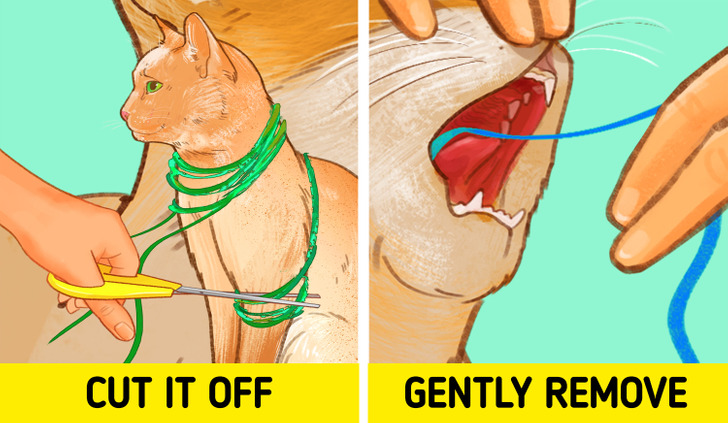
1. Remove the object if it’s visible. It’s a good idea to restrain the cat first. After, check if there’s any visible cord, string, yarn, etc., wrapped around its neck. If so, quickly remove it, or cut it off with a pair of scissors.
2. Apply the finger sweep method if the object is inside. If your cat is unresponsive, gently open its mouth and pull out its tongue to locate the object. Then sweep the mouth toward the base of the tongue. Ensure to act fast to clear the airway. It’s better not to push or grab at the object first, as you may unintentionally move it further down the throat. You can slowly move it or flick it to the side and wipe it away with your finger. If there’s nothing you can see, then move on to the Heimlich maneuver.
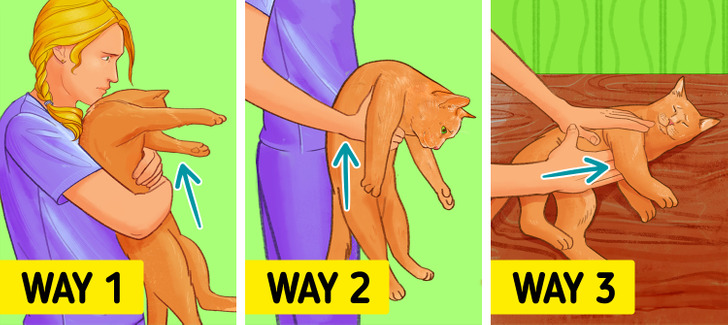
3. Do the Heimlich maneuver if the object isn’t visible or too far down. Make sure not to poke your finger down your pet’s throat. This way, you may lodge the thing to move further down the throat and cause injury. There are different ways to perform the Heimlich maneuver.
- If your cat can stand, hold it with its back against your chest. Then place your hands around the cat’s waist (belly) and gently but firmly make a quick thrust upwards. Repeat it multiple times if you aren’t successful on the first attempt.
- You can also consider holding your pet’s back against your stomach with its head up and paws down. Next, place your hand on its stomach, and find the soft hollow under its ribs. Then, pull it up toward your stomach in a quick thrusting way. Repeat this 2-3 times. Check the mouth to determine if the object has been dislodged. If not, repeat the process.
- If your kitty cannot stand, it’s a good idea to lay the cat on its side, putting one of your hands along its back. Using your other hand below the ribs of its belly, give several sharp pushes in and up. Then check the mouth for foreign objects and remove them. Repeat these steps if the thing is still there.
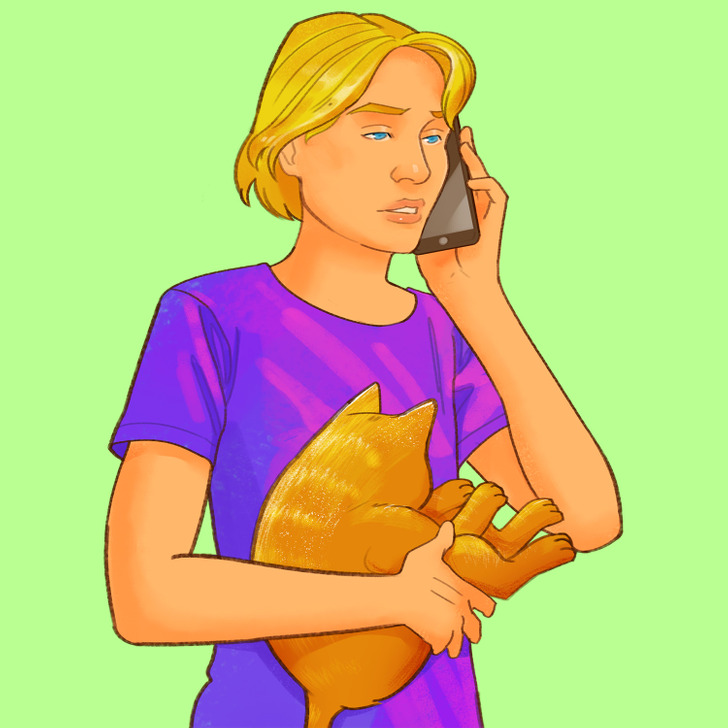
4. If your pet continues to choke or is in respiratory distress, immediately take your cat to a vet clinic. To ensure that the choking didn’t cause any harm to your feline friend, it’s still a good idea to visit a vet, even if the choking stopped or you managed to remove the object.
Bonus: how to prevent future choking
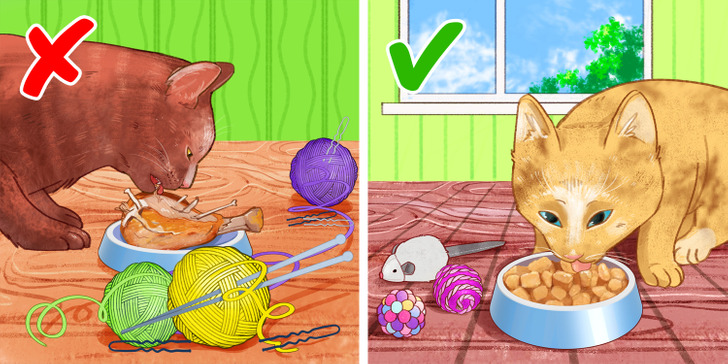
Choking can be prevented with some precautions. Keep an eye on anything that could be a potential choking hazard.
- Always be aware of what your pet is chewing on.
- You can watch your cat and its toys closely during play. Make the toys that could break off inaccessible. Common choking hazards include rubber bands, strings, paper clips, straws, aluminum foil, craft supplies such as pom-poms, pipe cleaners, etc. Go for the toys that don’t have any hanging decorations or parts. The larger the toys are, the better.
- Generally, cat food is produced suitable for the animal’s size, yet it’s always good to monitor them when they’re eating. It’s not a good idea to feed them bone-in foods.